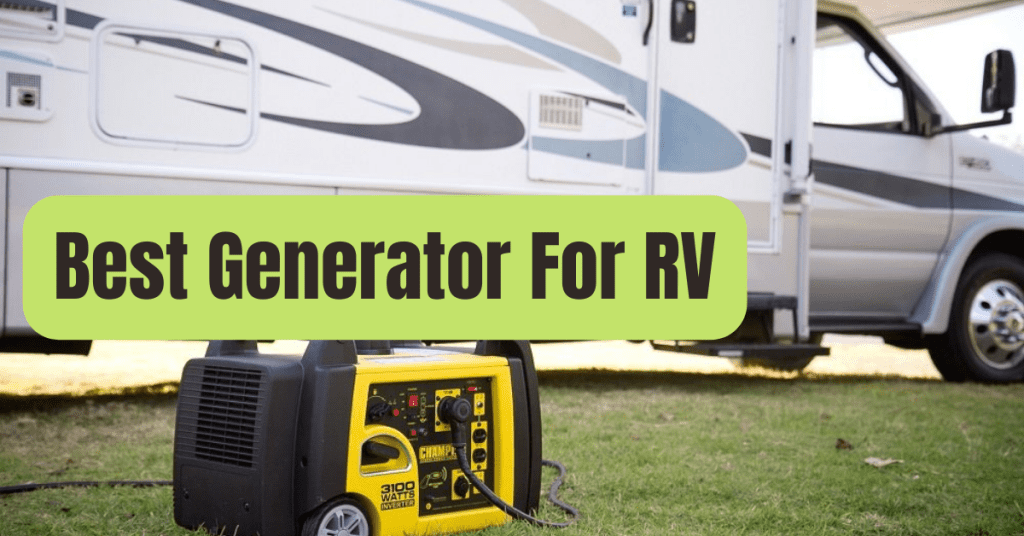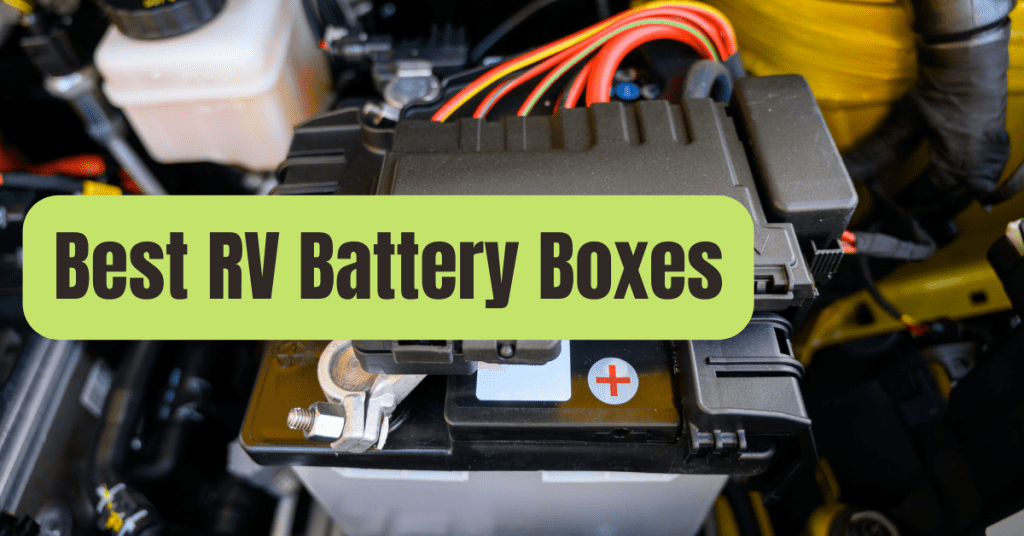A set of two or more RV batteries linked together in series or parallel form a bank of batteries.
By increasing amperage, voltage, or both, you may store more power than would be feasible with a single battery.
There is sometimes some misunderstanding on this subject, therefore today we’ll attempt to clarify what you need to know about connecting RV batteries in series vs. parallel.
What Distinguishes Batteries Placed In Series From Those Placed In Parallel?

Series wiring of batteries raises the voltage overall but not the amp-hour capacity of the batteries.
For instance, connecting two 12V batteries each rated at 100 amp hours in series produces 24V of power overall while maintaining the 100 amp-hour capacity.
Batteries are wired in parallel to enhance their total capacity, but not their voltage.
In this illustration, two 12V batteries rated at 100 amp hours connected in parallel still provide 12V of electricity but have a 200 amp-hour capacity.
It is advisable to utilize batteries with the same voltage and capacity whether connecting RV batteries in series or parallel (even brand if possible).
Making the cables that link one battery to the next as uniformly long as possible is also a good idea.
Understanding Series Battery Wiring

Battery wiring in a series for use in an RV is often only necessary when utilizing 6V batteries.
Keep in mind that the voltage rises when batteries are connected in series.
The standard RV is designed to work on 12V.
Pro Tip: Not sure which battery voltage you require? Visit our article.
Which Is Better For A 12 Volt Or 6 Volt RV Battery?
Therefore, you just need to connect the positive terminal of one battery to the negative terminal of the other if you’re connecting two 6V batteries in series.
You will now have the 12V of electricity that the majority of RVs need.
Connect the RV positive cable to the open positive terminal on one 6V battery and the RV negative cable to the open negative terminal on the second 6V battery after connecting the two 6V batteries in series.
Never connect the RV’s positive and negative lines to a single battery when wiring in series.
The system will remain balanced and the batteries will last longer if the load wires (positive and negative cables) of the RV are connected to separate batteries.
You may then link each series pairing in parallel if you wish to utilize 6V batteries to further improve your capacity without raising the voltage over 12V.
A series-parallel connection is what is being used here; we will go over this in a moment.
How to Parallel Wire Batteries

Simply connect the two negative terminals to one another before connecting the two positive terminals to wire two 12V RV batteries in parallel.
This will maintain your voltage at 12V (which is great for your RV) while doubling your battery capacity, giving you more time between recharges.
It’s acceptable even though cables connecting the two batteries to each of your terminals now.
Each terminal may have many wires attached to it.
That is how it works.
Simply connect the RV positive cable to the positive terminal of one 12V battery and the RV negative cable to the negative terminal of the second 12V battery to connect your two paralleled 12V batteries to your RV.
You don’t want to connect the RV’s load cables to a single battery, much as how two batteries linked in series are connected.
The arrangement is kept balanced and the battery life is increased by separating the connections to two distinct batteries.
Different Battery Charging Methods
Charging batteries in series vs parallel doesn’t vary much from charging a single battery.
The fundamental concept is the same.
When using a single battery, you would connect the positive terminal of the battery to the positive output of the battery charger.
The battery’s negative connection would then receive the negative output of the battery charger.
The concept is the same as long as your battery banks are properly connected.
The positive load wire from the RV is connected to the positive terminal and the negative load wire to the negative terminal of the battery when using a single battery.
You would connect the positive output of the charger to the positive terminal where the positive RV load wire is connected, whether you were charging two 6V batteries in series or two 12V batteries (or more) in parallel.
Additionally, you would connect the charger’s negative output to the same terminal to which the negative RV load cable is connected.
As a result, the batteries in the bank will charge at a consistent pace.
Make certain that the voltage rating of your charger matches that of the bank you are charging.
A 12V series bank or 12V parallel bank may be charged using a 12V charger.
However, you’ll want to make sure that your charger matches the voltage if you have a specific circumstance where you are connecting in series to 24V, 48V, or any other voltage.
Additionally, you may use a charger that is compatible with each battery in a bank to charge a single battery at a time.
For instance, if you only have a single 12V charger and four 12V batteries connected in series, you may connect and charge each battery separately.
Make sure your charger is rated for the battery chemistry you are charging as another important consideration.
Although lithium batteries need a slightly different voltage, most deep cycle batteries have comparable charging patterns.
The Best

Battle Born Batteries
The very best deep cycle lithium-ion battery for your RV is here: the 100 Ah 12 V LiFePO4 battery!
Despite only weighing 31 pounds, this battery has a life expectancy of 3000-5000 cycles and can provide up to 100 Amps of continuous current or 200 Amps of surge current.
It has a 10-year guarantee and is built in the United States.
Entering A Series String
It’s possible that you’ll need to connect a battery bank (string) in series to boost voltage for certain applications.
Perhaps you have a large solar array and wish to use battery power to run an inverter, which can then power 120V appliances.
If so, you can decide to connect many 12V batteries in series to get a greater voltage, such as 24V.
You must utilize a DC-DC converter if your RV is still using a 12V system for things like house lights, control panels, etc.
To power your RV’s 12V system in an emergency, connect the 12V load wires to the positive and negative terminals of a single 12V battery in series.
The series will become out of balance, less effective, and might have a shorter lifetime as a result.
Parallel and Series Connection

Recall how we stated you could connect more than two 6 volt batteries while still maintaining their compatibility with the 12 volt system in your RV? I’ll show you how to accomplish it now.
Two 6V batteries may be connected in series using existing knowledge.
Simply connect the positive terminals of the two batteries by connecting the negative terminals.
Now you essentially have a bank of 12V batteries.
However, if you wish to utilize 6V batteries to further boost your capacity, you may do so by linking a series pair of 6V batteries to a parallel pair (or several parallel pairs) of 6V batteries.
Once you have your 6V pairs set up, all you need to do is join them in parallel by connecting the open positive terminal of one pair to the open positive terminal of another pair, and vice versa for the open negative terminals.
Connect the positive load wire of the RV to the battery’s positive terminal starting at one end of the battery string.
Connect the negative load wire of the RV to the battery’s negative terminal starting at the opposite end of the battery string.
Keep in mind that connecting the RV load wires to a terminal that is already linked to the terminal of another battery is OK.
Safety Devices Connected in Series and Parallel
The wire used to link them in a series or parallel connection is the most important safety device.
That is a crucial factor to take into account for safety as well as efficiency.
Verify that it is rated for the amperage that it will be receiving.
The converter charger in your RV serves as an additional safety measure when connecting RV batteries in series.
If your RV will spend the majority of the time plugged in, this is extremely crucial.
Your batteries may be damaged if they are overcharged by certain older chargers.
To ensure a safer charging experience, make sure your RV converter includes a smart or 3-stage charger.
Don’t forget to maintain your batteries on a regular basis.
If you have flooded lead-acid batteries, be sure to monitor the water levels in them and keep the terminals clean.
Lithium or LiFePO4 batteries do not need routine maintenance.










